Film Inquiry Recommends: 7 Underrated Vampire Films
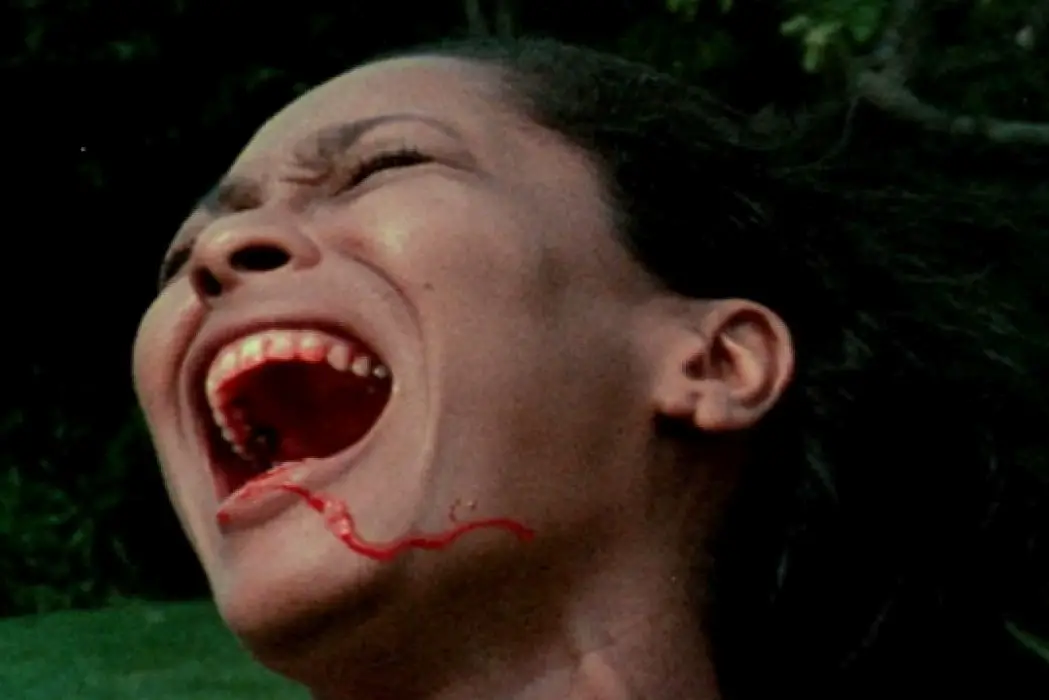
Alex is a 28 year-old West Australian who has a…
Over at our official Facebook page, we are currently posting daily film recommendations, with each week being a different theme. This is a collection of those recommendations! This week’s theme is underrated vampire films.
One of the major horror subgenres, the topic of vampires has been done in movies thousands of times. It started with F.W. Murnau’s Nosferatu and Tod Browning’s Dracula, two horror staples that virtually created the legend and aesthetics of the typical cinematic vampire.
What makes the vampire mythology so great for film narratives is how adaptable it is. The idea of vampires can be translated into a variety of different directions: romance, horror, comedy, and more. As long as you touch upon the established tropes and characteristics of the vampire mythology, filmmakers are open to experiment and create fresh material from the heavily-used sub-genre.
Whilst most filmmakers tend to lean on retelling Bram Stoker‘s story of Dracula, below is a selection of creative and interesting takes on the popular vampire genre.
1. Thirst (1979, Rod Hardy)
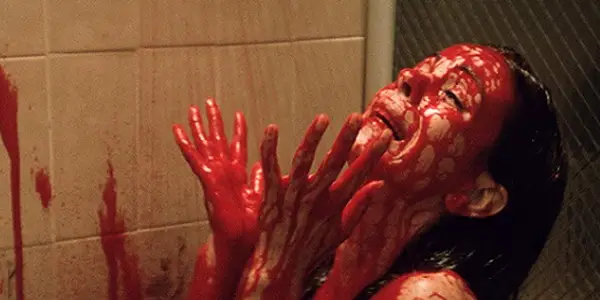
Made during the last years of Australia’s prolific ozploitation period, Rod Hardy’s Thirst is an extremely trippy and unconventional vampire film, one which feels like an Australian Dario Argento movie. Made during a period when the British Hammer studios had revitalised the vampire genre through their own series of Dracula films (which starred the late Christopher Lee), Thirst is quite a distinctive low budget alternative to the gory and indulgent Hammer films.
The film’s disregard for many established vampire “rules”, such as being able to stand daylight, having no fear of crosses, and more, makes it one of the more non-conformist horror films released at the time. The subversion of established cinematic tropes was one of the many characteristics of the ozploitation films, made during the ’70s and ’80s, genre films which mixed low budgets with ambitious ideas in order to capitalise on drive-in culture and make a quick and easy buck.
When Kate Davis (Chantal Contouri) is kidnapped by a mysterious organisation known as The Brotherhood, she is shocked to learn the existence of vampires within society. When the Brotherhood informs Kate that she has been kidnapped due to being the last in the lineage of the vampiric idol Elizabeth Bathory, Kate is subject to a series of physical and mental tests in order to extract her Bathory lineage. Frequently medicated and unable to leave, Kate starts to enter a series of various hallucinations and dreams, which start to blur the line between reality and fiction for the tortured subject.
The film shares many similarities to the brutal French extremism film Martyrs, which also centered on a female protagonist who was tortured by a shadowy organisation in order to access an avenue into divinity. Whilst Matyrs focused on the torture porn aspects of the female protagonist’s relentless degrading, Thirst chooses to explore Kate’s deteriorating mental state through a series of psychedelic dream sequences, which take up most of the film’s running time.
The clinical approach to the vampire genre in Thirst makes the often stereotypical subject matter feel quite fresh, introducing some new ideas and aesthetics. Some people might be put off by the film’s arthouse treatment, as it shys away from jump scares in order to setup an experimental atmosphere that has shades of the old classic giallo films.
2. The Legend of the 7 Golden Vampires (1974, Roy Ward Baker, Chang Cheh)
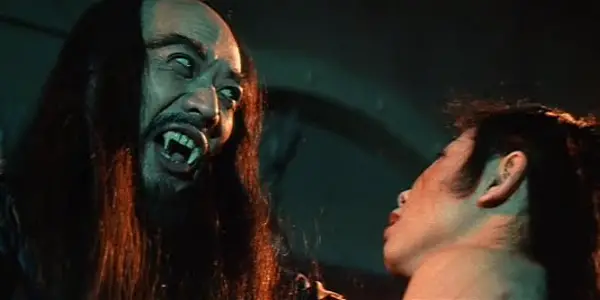
A unique collaboration between two beloved genre directors from opposite sides of the world, The Legend of the 7 Golden Vampires is the film you exactly think it would be – in the best way. Roy Ward Baker was quite an established British director, with his best known film being the Titanic film A Night To Remember. As his career progressed, he moved away from drama, going towards horror, making quite a few hits for both Hammer studios and Amicus, a variety of Gothic horror films and anthology features. Meanwhile, Chang Cheh was one of the Shaw Brothers’ (the hugely influential Hong Kong studio) main directors, pumping out over 100 different films throughout his illustrious career, with his most celebrated titles including Five Deadly Venoms, One-Armed Swordsman and The Heroic Ones.
In order to attempt to partake in the highly profitable kung-fu cinema scene (thanks to the rise in drive-in and grindhouse theatres), Hammer studios proposed a co-production with Shaw Brothers in order to make a crossover hit, for both English and Chinese audiences. Even after several name changes (a common practice in exploitation film marketing), the film wasn’t exactly the huge success Hammer studios have hoped for, despite its generally good reviews.
After being revived by a cult member, Count Dracula (John Forbes-Robertson) travels to a secluded Chinese village in order to recruit 6 “golden” vampires, who are currently astray due to the death of the 7th member. Coincidentally, Van Helsing (Peter Cushing) happens to be teaching in the village and gets wind that Dracula has finally returned. As Van Helsing creates his own vigilante group of citizens to fight Dracula, the Count himself forms his own army of kung-fu trained vampires to finally bring Dracula back to power.
Neither the best Hammer Horror film or Shaw Brothers film, The Legend of the 7 Golden Vampires is still a solid genre hybrid. Whilst Christopher Lee had departed the role of Dracula at this point, Peter Cushing stuck around for his final portrayal of Van Helsing (a role he’d played for 4 previous films, including the original Christopher Lee Dracula picture), a role which he effortlessly nails here again.
Whilst most filmmakers tend to lean on retelling Bram Stoker‘s story of Dracula, below is a selection of creative and interesting takes on the popular vampire genre.The colourful and distinctive Hammer production design is evident here, the vibrant and unrestrained aesthetics being a stark contrast to the Gothic and chiaroscuro visuals of most horror films of the time. The insane premise of the film is luckily held up by an eclectic mix of action scenes – where else can you find Van Helsing pitted against an army of martial art fighting vampires? Definitely a film for exploitation or schlock fans, The Legend of the 7 Golden Vampires is a peculiar action/horror combination that reminds us of the crazier side of cinema.
3. Ganja and Hess (1973, Bill Gunn)
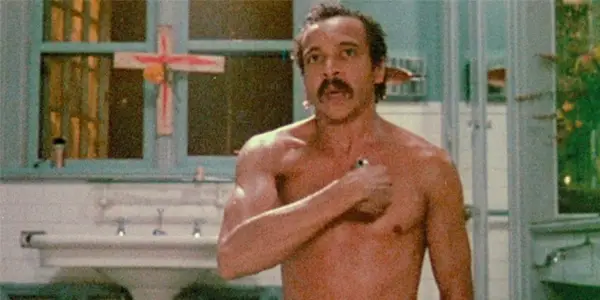
Pretty unknown nowadays, Bill Gunn’s provocative vampire film is best known for being remade in 2013 by Spike Lee with his kick-started film Da Sweet Blood of Jesus, a modernised revamp spawned from Lee’s outspoken appreciation of this film. The other notable claim to fame for Ganja and Hess is it provided the only other leading role for Duane Jones, who is famous for his leading role in George A Romero’s classic Night of the Living Dead. A playwright and scriptwriter, Bill Gunn is quite a revered filmmaker despite his small amount of cinematic credits, thanks mostly to this film and his various screenwriting credits (such as The Landlord and Stop). A landmark in African-American filmmaking, Ganja and Hess is an alternative approach to the vampire genre, using the established tropes to create something more profound.
During an excavation of the ancient civilization of Myrthia, archaeologist Dr. Hess Green (Duane Jones) is stabbed by his maniacal assistant, who promptly kills himself. After finding out he was stabbed by a mythical knife, Green finds that he has an unquenchable appetite for blood. Trying to control his vampiric tendencies, Green meets with his former assistant’s wife Ganja Meda (Marlene Clark) and they form an overnight romance. As their bond grows closer, Green struggles to suppress his need for blood, which cause dire consequences for them both.
Despite critical acclaim at the 1973 Cannes Film Festival (deemed one of the best American films of the decade), Ganja and Hess received quite a botched and minor American release, which has contributed to its current underrated state. In an attempt to fix this, the film was severely recut several times (a move denounced by Gunn) and retitled so much that the original film remained lost for several years, until historians and the original producers donated it to the Museum of Modern Art, which then prompted a remastered DVD release that has luckily saved its reputation.
Thanks to its low budget, Bill Gunn had complete creative control, which is quite evident in the film’s idiosyncratic style. Its deliberately slow pace and avant-garde narrative might turn off casual horror viewers who are after some fast-paced vampire action. Gunn’s film uses vampire tropes to deliver a deeper story, using the idea of vampirism as a metaphor for addiction.
Ganja & Hess’ intelligent tone is evident when compared to the other African-American centred vampire film, Blacula, a film which Gunn stated he wanted to avoid making, remarking that he initially turned down Ganja and Hess because he “didn’t want to make a black vampire movie”. Whilst quite hard to track down nowadays due to the DVD being out of print, Gunn’s perceptive film is definitely worth watching if you’re after something smarter in your horror cinema.
4. The Hunger (1983, Tony Scott)
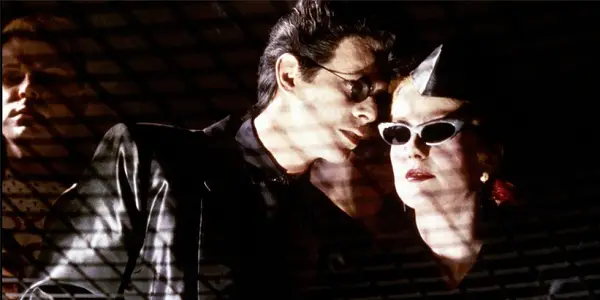
Tony Scott’s first full-length feature film, The Hunger is an experimental horror film which mixes gorgeous visuals with arthouse flair, centred by a trio of great performances. Tony Scott was a director who played with a variety of different genres throughout his career, starting with arthouse horror, to the mainstream action film Top Gun, going on to dabble in buddy-cop films (Beverly Hills Cop 2 and Last Boy Scout), paranoid thrillers (Enemy of the State and Spy Game), and action-packed crime films (True Romance and Revenge), but sadly never returning to the horror genre.
Egyptian vampire Miriam Blaylock (Catherine Deneuve) has lived generations by constantly finding partners, feeding off them and keeping them immortal, until she is sick of them and buries them alive. When her current partner, John (David Bowie) catches on that he is going to be discarded by Miriam and finally starts dying, he contacts doctor Sarah Roberts (Susan Sarandon), who initially doesn’t believe him. When he dies in a spectacular fashion, Sarah decides to investigate John’s claims and gets entangled with Miriam. The film mixes elements of the French New Wave, Gothic imagery, and old school vampire lore.
Even with his brief appearance (the film’s marketing was quite deceiving with his role within the film), Bowie does a great job of being a stylish vampire who slowly realises that he’s at the end of his very long life. His shift from calm and collected demeanour to increasingly desperate and weak is a big example of Bowie’s natural acting talents, being one person who made the transition from singing to acting successfully, not being a distraction within the film. Scott’s subversive vampire tale is now available on Blu-ray, which is a highly recommended way of checking out this obscure horror film.
5. Near Dark (1987, Kathryn Bigelow)
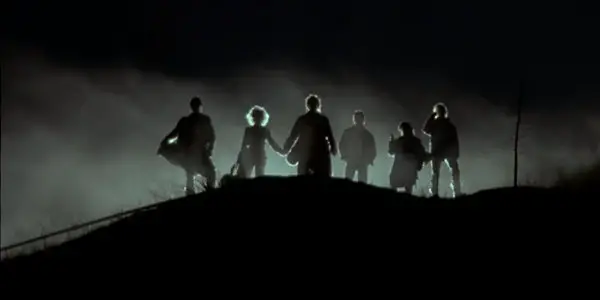
At the moment, Kathryn Bigelow is probably the best known female director, mostly due to her Oscar-winning direction of The Hurt Locker, making her the first (and only) female director to win the Best Director Oscar. Whilst she’s now known for her political films (Zero Dark Thirty, K-19 and The Hurt Locker), Bigelow’s filmography is filled with a slew of strong genre films, which include the sci-fi movie Strange Days, bank heist thriller Point Break, and this Western/horror themed vampire mash-up film, Near Dark.
Caleb Colton (Adrian Pasdar), a loner in a small town, meets the mysterious drifter Mae (Jenny Wright), who share an enchanting night together. The night comes to an abrupt end when Mae bites Caleb and runs away. The next day, Caleb realises that he’s been transformed into a vampire and tracks down Mae for some answers. She invites him to join her travelling group of drifter vampires that includes Severen (Bill Paxton) and leader Jesse Hooker (Lance Henriksen). As Caleb starts to realise the violence and bloodshed that’s associated with being a vampire, he decides that he and Mae need to break free from the violent gang and start a new life together.
Whilst the leads of the film aren’t the most engaging, it doesn’t help that they are severely overshadowed by the terrific performances by the always reliable Lance Henriksen and Bill Paxton, whose violent and psychopathic characters really give the film its off-beat energy. Bigelow successfully mixes the western and horror genres in a modern setting, helped with Tangerine Dream’s very ’80s-sounding soundtrack.
The film succeeds by avoiding the usual vampire film tropes, creating a new look/style of vampire that avoids falling into any cliché territory and giving the film a sense of originality. The frequent and heavy bloodshed alongside the practical effects is also enough to satisfy any genre fan that wants to just watch an old school horror film. Near Dark is one of Bigelow’s best films and one of the better vampire films of the past 30 years.
6. Vampire’s Kiss (1988, Robert Bierman)
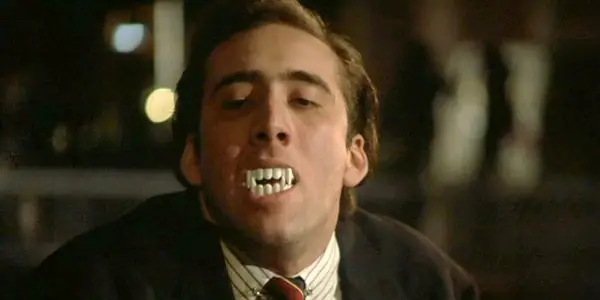
In a society that demands every new pop culture injection be converted into a repetitive online meme (see the current saga of Ken Bone or even the recent Harambe controversy), it’s interesting to look back at one of the most popular and on-going cinematic online obsessions – the cinema of Nicolas Cage.
One of the many Coppola family members working within Hollywood, Cage was an actor who got his start in teen comedies (Fast Times at Ridgemont High and Valley Girl), slowly becoming an A-List star through his Oscar-winning performance in Leaving Las Vegas and his string of successful action films (Con Air and The Rock), before hitting a huge slump in popularity due to a series of poorly received films, the fate of many Hollywood actors. Due to his often-exaggerated style of acting that sees him giving 110% no matter what, online film communities began an obsession with Cage, stemming from his crazy performance in The Wicker Man remake, which opened up a history of unhinged Cage performances in films such as Deadfall, Matchstick Men and Vampire’s Kiss. Vampire’s Kiss is a hard film to describe, a self-proposed “black comedy” (in the same vein as Tommy Wiseau’s The Room). This particular film is an absurd take on the vampire genre.
To define a plot to this film is quite hard, as it coasts on a very thin premise for most of its 90-minute runtime, filling most of its time with scenes of Cage absolutely losing his mind or interacting with the supporting cast in a series of senseless scenes that defies any standard narrative practices. Businessman Peter (Nicolas Cage) lives a pretty easy life, going between his office job, therapy sessions, and frequent one-night stands. On one particular night with a woman, Peter hallucinates (or does he?) that he is bitten by a vampire, which starts a lengthy and painful transition for him to become a vampire. As this goes down, Peter questions his sanity, as to whether he really is becoming a vampire or he’s just having a mental breakdown from the stress of his intense work-life.
Due to his lengthy vampire transitional sequences, Vampire’s Kiss features many scenes of Nicolas Cage seemingly improv-ing, as he acts out different aspects of vampire life. These include growing fangs (which is accomplished by Cage wearing a child’s pair of toy teeth), eating animals, and avoiding sunlight. Whilst these scenes are extremely funny in their absolute insanity, to call it a good film is quite hard. The plot is thin and incoherent, the beginning is quite slow, and the acting is quite bad overall.
The reason for this recommendation is highlighting the shift in the Hollywood studio system; just the pure fact that Hollywood would produce and release a film like this back in 1988 is a practice that is completely unheard of today. Nicolas Cage’s latest film, Army of One, a film which promises another unforgettable Cage performance, is being released straight to VOD platforms, the fate for many low-budget comedies nowadays. If you want to see a hilarious Nicolas Cage film that’s not The Wicker Man (outside of the Cage scenes, that one is quite a drag to sit through), Vampire’s Kiss will totally fill that gap.
7. Stake Land (2010, Jim Mickle)
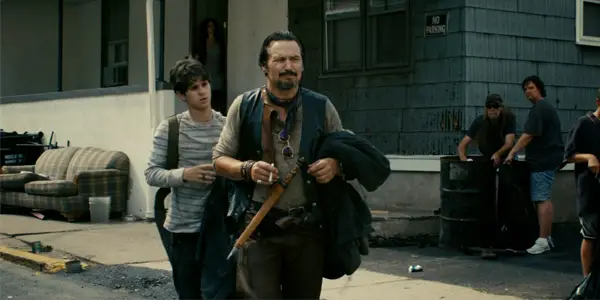
With only four features under his belt, director Jim Mickle (and collaborator Nick Damici) has burst onto the independent movie scene as one of the most promising filmmakers this decade, thanks to a diverse range of well-crafted genre films. Cold in July, his crime noir film from 2014, is one my favourite films of the past 5 years, a brilliant mix of different sub-genres that avoids the typical clichés of the various topics it touches upon. Made after his low-budget debut feature Mulberry Street, Stake Land is an inventive riff on the vampire genre, feeling like a gory cousin to Zombieland, thanks to their similar tone and plot resemblances.
Co-writer Nick Damici stars as Mister, a mysterious vampire hunter who navigates the post-apocalyptic lands of America, one which has been crippled by an ambiguous pandemic of vampires. Mister comes across the young Martin (Connor Paolo), whose entire family has just been slaughtered by a roaming group of feral vampires. Taking him under his wing, Mister trains Martin in the skill of vampire-hunting, whilst they navigate a dangerous journey towards New Eden, an implied safe haven that resides in Canada.
What makes this film stand apart from other vampire revisionist fiction is the extremely solid direction by Mickle, who makes each encounter with the different classes of vampires quite thrilling and constantly engaging. As the plot moves forward, Mickle and Damici touch upon every tired vampire cliché, twisting them in a post-modernist fashion and making sure the film never gets stale. Whilst Stake Land feels more like a zombie film thanks to its post-apocalyptic atmosphere and nature of the vampiric creatures, it is one of the better modern vampire films to emerge from the independent scene.
Can you recommend any other great vampire films?
Does content like this matter to you?
Become a Member and support film journalism. Unlock access to all of Film Inquiry`s great articles. Join a community of like-minded readers who are passionate about cinema - get access to our private members Network, give back to independent filmmakers, and more.













